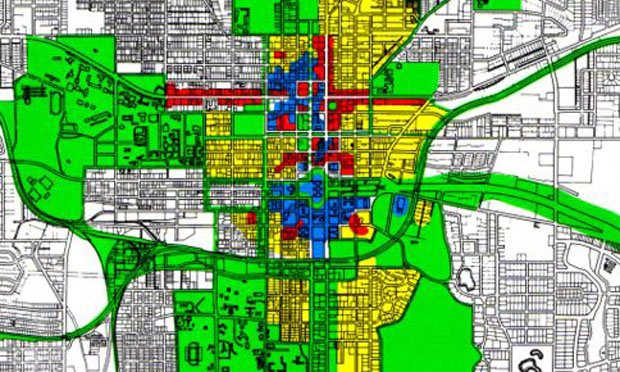
Early in U.S. history, per-capita incomes varied widely, with some richer states boasting more than four times the average income of poorer ones. From 1880 to 1980, though, the gap closed steadily — a phenomenon scholars call “income convergence.” Part of the reason was labor mobility, as lower-income workers were able to move relatively easily to locations with higher-paying jobs. But why did this leveling effect slow about 30 years ago? Research suggests that the phenomenon may be partly explained by housing prices and more stringent land use and zoning laws that made certain housing markets increasingly unaffordable for lower-wage workers. The concept of more restrictive zoning — even deliberately exclusionary zoning — in high-income neighborhoods is a familiar one in many regions, and it turns out that the aggregate effects may have helped reshape opportunity in the United States.
A 2012 paper from researchers at Harvard University and the Harvard Kennedy School, “Why Has Regional Income Convergence in the U.S. Stopped?” sought to analyze precisely this relationship between housing prices and rates of income convergence. The authors, Peter Ganong and Daniel Shoag, analyze data from the U.S. Census and the American Community Survey. They also examine land-use decisions in state appeals courts and use this as a measure of zoning restrictions in the states.
The study’s findings include:
- Income convergence in the United States increased rapidly between 1940 and 1980. The rate slowed between 1981 and 2010, and in some years during the second period, there was essentially no convergence. Since 1960 the difference in housing prices between rich and poor areas relative to differences in income has become increasingly large.
- “Rising housing prices disproportionately reduce the value of living in productive areas for low-skilled workers. The net effect is that the returns to living in high-income areas for low-skilled households have fallen dramatically when housing prices rose, even as they have remained stable or grown for high-skilled households.”
- High-income areas have become prohibitively costly for low-skilled workers due to increasing housing prices in these areas. Low-skilled workers are moving away from these areas, while high-skilled workers are moving in. This is a contrast to earlier periods, in which both high- and low-skilled workers were migrating to these areas.
- Housing-price regulations are highly correlated with price increases: “Housing supply constraints reduce permits for new construction, raise prices, lower net migration, slow human capital convergence and slow income convergence.” In addition, the authors find that land-use restrictions have become increasingly common over the past 50 years. Between 1960 and 2010, the number of such regulations quadrupled.
- Based on migration data, the researchers find “a large decrease in the in-migration rate of low-skilled workers to high BA [college degree] states from 1980 to 2010, and no change or a small decline in the in-migration rate of high-skilled workers to high BA states. These results suggest that rising shares of [bachelor’s degrees] in high-BA areas … may partially be the result of out-migration by low-skill workers and domestic human capital production, rather than increasing in-migration by high-skill workers.”
- Heightened land-use restrictions prove to have had multiple negative effects: “First, we find that tighter regulations raise the extent to which income differences are capitalized into housing prices. Second, tighter regulations impede population flows to rich areas and weaken convergence in human capital. Finally, we find that tight regulations weaken convergence in per-capita income. Indeed, though there has been a dramatic decline in income convergence nationally, places that remain unconstrained by land-use regulation continue to converge at similar rates.”
The study concludes that land-use restrictions have resulted in “limited access for most workers to America’s most productive cities.” Movement of labor across the states helps explain about 30% of income convergence — the reduction of hourly wage inequality — between 1940 and 1980. If that dynamic had held between 1980 and 2010, wage inequality in the United States would likely be 10% smaller, the researchers state.
For more perspective on how zoning has shaped the American landscape and the composition of neighborhoods, see the 2012 study “Zoning and Diversity in Historical Perspective,” published in the Journal of Planning History.
Tags: poverty, economy, inequality
